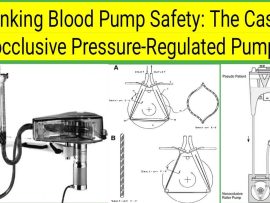Abstract Introduction Prolonged extracorporeal circulation time is known to cause intraoperative and postoperative bleeding, but the underlying mechanism is not fully understood. In this study, we analyzed the effects of..
Lire la suiteIn cardiopulmonary bypass (CPB), roller and centrifugal pumps have been the mainstays for decades, each with unique benefits and challenges. However, these traditional blood pumps come with inherent pressure-related risks..
Lire la suiteAbstract OBJECTIVES Extracorporeal circulation induces pronounced effects on haemostasis and rheology. To study these, an ex vivo simulation model is an attractive alternative but often requires large amounts of blood. We sought..
Lire la suiteAbstract Objectives: To investigate outcomes associated with conventional roller or centrifugal pumps during neonatal venovenous extracorporeal membrane oxygenation (ECMO). Our primary hypothesis is that in comparison with conventional roller-pump support, centrifugal pump use is..
Lire la suiteAbstract Extracorporeal membrane oxygenation (ECMO) is an invaluable means of supporting critically ill children with refractory respiratory or cardiac failure. Controversy remains; however, whether roller or centrifugal pumps are superior,..
Lire la suiteAbstract Objective: The COVID-19 pandemic requires thinking about alternatives to establish ECMO when often-limited hardware resources are exhausted. Heart-lung-machines may potentially be used for ECMO but contain roller pumps as..
Lire la suiteAbstract Introduction: Pulmonary endarterectomy (PEA) is the most effective treatment available for chronic thromboembolic pulmonary hypertension (CTEPH). Patient selection, surgical technique and perioperative management have improved patient outcomes, which are..
Lire la suite




